The Best Type of Flooring for Families, According to the Pros
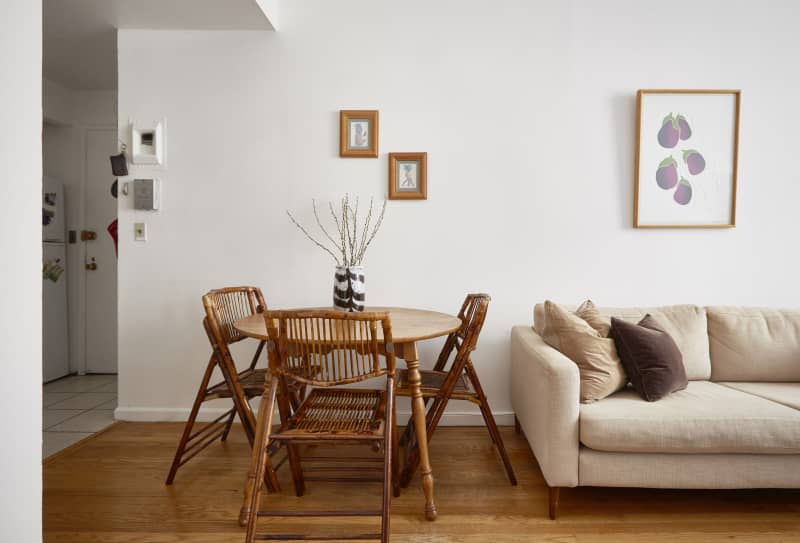
There’s a lot to consider when trying to figure out what types of flooring work best for your lifestyle. It’s a decision that comes into play whether you’re looking to move into a turn-key home with your flooring choices already installed, or you’re hoping to remodel your current home and choose entirely new flooring. Factors to keep in mind include the flooring material’s durability, the style, whether it’s water-resistant, and, if you’re pursuing a reno, how much it costs.
Kat Christie, licensed contractor, DIY expert, and founder of She Fixed That LLC, adamantly says the most important thing affecting your flooring decision is your lifestyle. If you have pets and kids, your ideal flooring choice could look a lot different from a single person with a “shoes-off” home. So which types of flooring are best for your particular needs? Here, experts weigh in on some of the most popular types of flooring, offering up info on cost, style, and the pros and cons of each material.
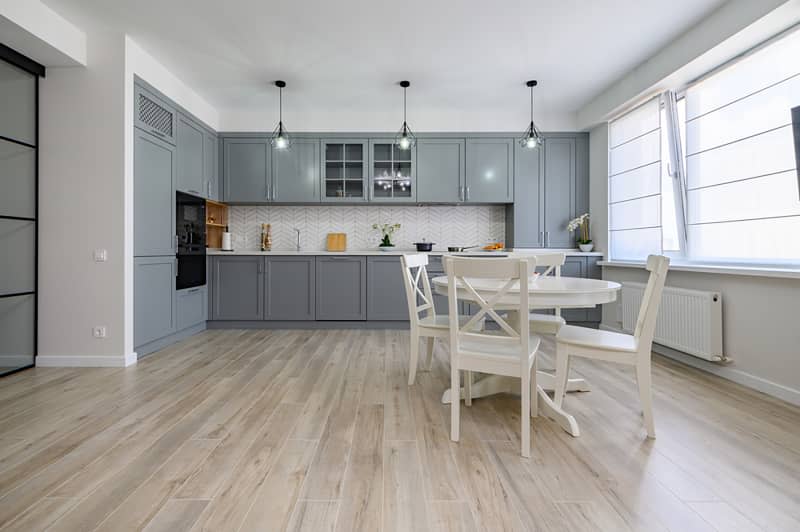
Vinyl Flooring
Vinyl flooring is made from plastic, and typically contains materials like acrylic, PVC, and similar polymers, says Stephanie Martinez, division merchandise manager of hard flooring at The Home Depot. Depending on the brand and quality of the vinyl, you can expect to spend anywhere between $.50 to $8 a square foot.
“Vinyl flooring stands out in terms of its appearance because it’s designed to mimic the look of various other flooring types,” Martinez says. Luxury vinyl plank flooring can mimic hardwood, and vinyl tile flooring can give you the look of high-end stones like marble. The benefit is not just that vinyl is cheaper than these other materials; it’s also water-resistant and more durable, making it a great choice for bathrooms, basements, and kitchens.
Depending on the quality, usage, and maintenance, Martinez says lower-end vinyl flooring can last somewhere between five and 10 years, whereas higher-end vinyl floors can last as long as 20 years.
Pros of Vinyl Flooring
Vinyl plank flooring is known for its versatility and durability. It is comfortable underfoot, while still creating a sleek, attractive finish to your room, says Martinez.
It’s moisture-resistant and stain-resistant, and it can dampen noise, making it a preferred flooring choice for families with children and pets.
Vinyl flooring costs a fraction of the price of hardwood, making it a great option for beginner home-improvers, according to Martinez.
Vinyl can be installed in rolls or in a variety of different shapes, sizes, and install methods. These install methods include adhesive, peel-and-stick, and click-lock. Vinyl can also be installed directly over most existing floors.
Vinyl flooring is inexpensive, ideal for heavy traffic areas like kitchens and hallways, and easy to install.
Cons of Vinyl Flooring
It can be difficult to repair any scratches or dings.
As attractive as it is, you’ll still know it’s not real wood, says Christie. If that’s a dealbreaker, you’ll want to skip vinyl.

Laminate Flooring
Laminate flooring is another affordable option if you want the look of wood but need something a little stronger. It’s made with layers of pressed wood (among other bonding materials) and is overlaid with a finish that mimics the look of various wood types, “making it a cost-effective alternative to real hardwood,” Martinez says.
Most laminate is best used in dry areas of the home, as the wood particles in the material make it more susceptible to moisture damage than, say, vinyl. But there are water-resistant versions that can work in bathrooms, kitchens, and basements, Martinez says.
The cost for laminate is anywhere from $1 to $10 per square foot, depending on the brand, style, and durability of the product. Easy-install versions have click-lock construction that makes them DIY-friendly, as the pieces snap together easily and can be walked on immediately.
Note that an important factor in how much you like your laminate floors is how good the subfloor is. Because laminate is a hard material, these floors often feel more comfortable underfoot if you use a subfloor with a little cushion, like cork or foam.
Pros of Laminate Flooring
Laminate comes in planks, tiles, or squares that feature an interlocking tongue-and-groove assembly, which simplifies installation. You can easily lay DIY laminate floors in almost every room in your home.
Grain styles of laminate wood flooring mimic the look of pine, maple, cherry, oak, and other hardwoods.
Laminate is easy to care for and clean, making it a smart pick for high-traffic spaces and family-friendly areas. Different types of laminate floors generally don’t require unique maintenance either. That means lots of flexibility and long-term durability no matter what style you choose.
Cons of Laminate Flooring
You have to be quick with spills — letting water sit on the laminate flooring for too long will damage the material, causing warping.
Even though it’s more durable than actual hardwood, laminate flooring is still susceptible to dings and scratches in high-traffic areas.
Repairs may be easy to make, but color matching those repairs is more of a challenge. That’s why you always want to keep extra flooring material on hand for future repairs, warns Christie.
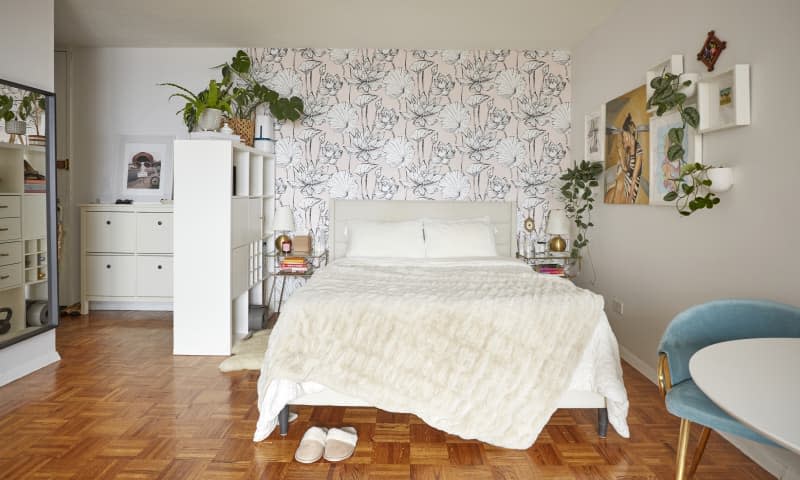
Hardwood Flooring
Hardwood flooring, used in homes for hundreds of years, provides a timeless look. And while there are a range of wood types available that all have different qualities, some species are actually pretty durable.
The durability factor of various hardwoods is measured on something called the Janka hardness scale. The test measures how resistant the wood is to denting when pressure is applied — and the higher the Janka rating, the tougher the wood. Maple is one of the softest types, with one of the lowest Janka scores, and hickory is one of the hardest, with one of the highest Janka scores.
If your heart is set on hardwood flooring, make sure to choose a type that is compatible with the amount of traffic you expect in the space.
An advantage of hardwood flooring is that it can be refinished multiple times to eliminate the appearance of wear-and-tear. Some types of hardwood flooring can be refinished as many as five times.
One drawback, though, is the cost. The price of hardwood flooring varies based on the species and the installation, but it’s usually in the range of $4 to $15 per square foot, Martinez says.
Pros of Hardwood Flooring
Certain types of hardwood floors can be refinished up to five times, and you can change the sheen to match a newly decorated room.
Hardwood flooring is a timeless and classic option that adds value to your home because of its appeal to a wide range of homebuyers.
All hardwoods are tested for how they withstand wear and tear.
“Hardwood” encompasses many species of wood that all have different looks, so you can choose something that matches your style. Options include red oak, white oak, cherry, walnut, hickory, and maple, among others.
Cons of Hardwood Flooring
There can be a bigger upfront cost compared to other types of flooring.
Solid hardwood is especially susceptible to water damage. Spills and flooding can cause warping that will require expensive repairs, Martinez says.
Hardwood floors are prone to scratches and dents, so it’s important to think about whether the area will see high foot traffic or be pet- and kid-friendly.
You can’t use it everywhere in the house. Bathrooms, basements, laundry rooms, and mudrooms are not great places for hardwood, as these areas have frequent contact with moisture and are generally high-traffic.
Small repairs are DIY-able, with the biggest concern being color matching.
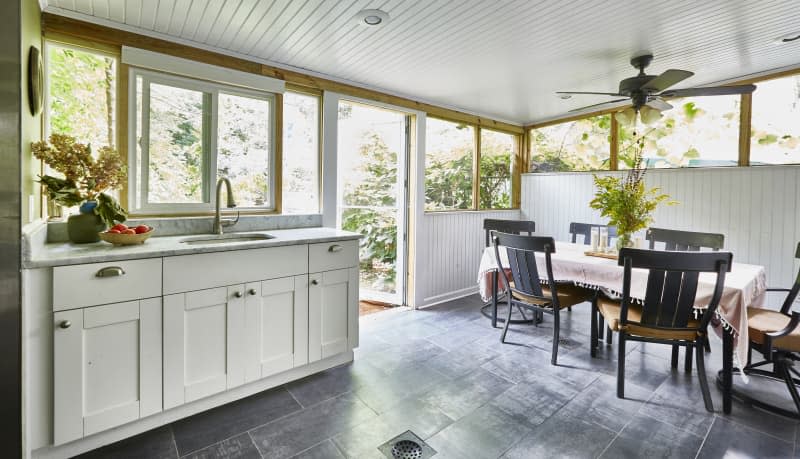
Tile Flooring
While tile flooring is ideal for kitchens and bathrooms, it really can be used anywhere, says Christie. “If it’s installed properly, it can last a lifetime and it is exceptionally durable,” she says.
Tile flooring actually encompasses a few different types of materials, the most common of which are ceramic, porcelain, and natural stone. Ceramic and porcelain are the most affordable options, while natural stone — including marble, granite, slate, and more — can be quite expensive.
Typically, ceramic and porcelain tile floors cost between $15 and $20 per square foot. Specialty products can cost much more.
Natural stones generally cost between $10 and $50 per square foot, although some types can be much more expensive.
Tile floors are versatile and durable, and generally require minimal maintenance. Make sure to choose something that’s strong enough for flooring use; look for a Porcelain Enamel Institute hardness rating (PEI) of at least 4, Martinez says.
Pros of Tile Flooring
Tile flooring is highly durable and can withstand heavy foot traffic.
Most tile materials, such as ceramic and porcelain, are inherently water-resistant.
Tile flooring is easy to clean and maintain.
Tiles come in a wide range of styles, colors, patterns, and textures, allowing for customization and creativity in design.
Cons of Tile Flooring
It can feel cold and hard underfoot, says Christie.
Tile can get expensive between the style choice and installation.
Grout lines between tiles can be tough to keep clean and show wear faster than the tiles themselves.
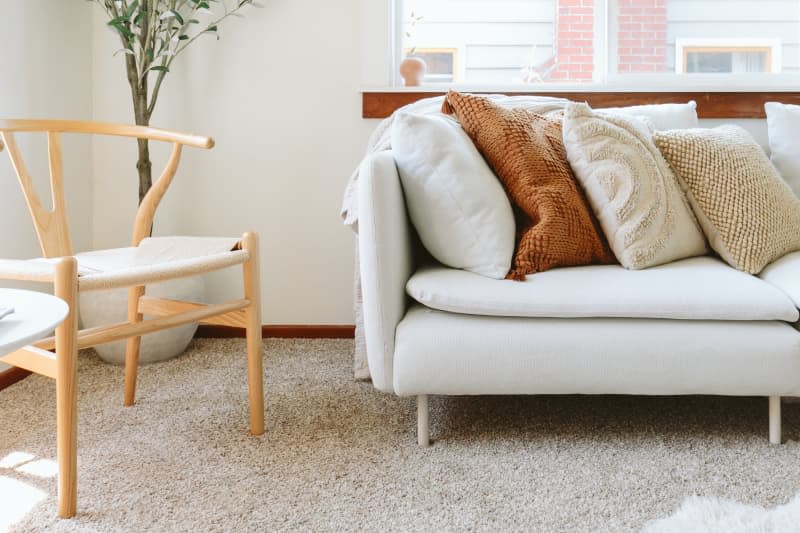
Wall-to-Wall Carpet
Carpet is soft and cozy, making it great in living rooms and bedrooms, says Christie. However, it’s not a flooring material you’ll want to use everywhere at home — skip it for any spots that have moisture exposure, including kitchens, bathrooms, and laundry rooms.
The average cost for wall-to-wall carpet depends on the quality of the carpet and what it’s made from; materials can include nylon, polyester, wool, and more. The price for wall-to-wall carpet can range anywhere from $2 to $4 per square foot.
As for style, the looks these days run the gamut. One major decision you’ll need to make is how fluffy you want your carpet to be. High-pile carpets (think: retro shag) have longer fibers and fluffier appearances than low-pile carpets.
Pros of Wall-to-Wall Carpet
Carpet is cozy underfoot and adds warmth, making it a great choice for bedrooms and living rooms in cold areas.
It’s a great sound reducer, from footsteps, creaks in the floor, and more.
Carpet comes in a wide range of designs and colors that can suit a variety of home styles.
Cons of Wall-to-Wall Carpet
Carpet can be hard to keep clean — especially if you have messy kids and pets.
It can wear down easily.
It’s not good for pets or folks who have allergies, according to Christie, as carpet can trap and hold irritants.
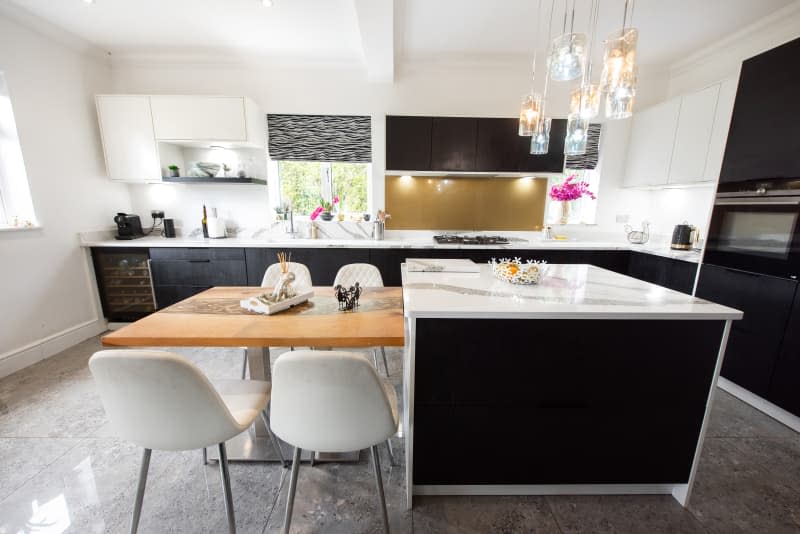
Epoxy Flooring
Epoxy isn’t exactly a type of flooring — it’s actually a resin coating that’s poured on top of concrete as a form of decoration or protection. But if you’re looking at finishing a basement, laundry room, or garage space that already has concrete subfloors, this might be a good option.
“Epoxy is made through a multi-step process that involves mixing two main components: epoxy resin and a hardening agent, also known as a curing agent,” says Karielle Day, merchant of paint at The Home Depot. She says that one of the most distinctive features of epoxy flooring is its high-gloss finish.
Day says it’s most popular for garage floors because it’s durable, it’s resistant to chemicals and stains, and it’s easy to clean, but those qualities make it well-suited to spaces like laundry rooms, kitchens, and basements, as well.
“On average, epoxy costs can range from $3 to $12 per square foot depending on the type of epoxy used, labor cost, and the size and condition of the area you are covering,” according to Day.
Pros of Epoxy Flooring
It is exceptionally durable and can withstand heavy foot traffic and impacts, says Day.
Epoxy flooring is easy to clean and maintain.
Epoxy flooring offers a wide range of customization options.
It is highly water-resistant.
Cons of Epoxy Flooring
Epoxy has a higher upfront cost than other types of flooring.
When using a two-part system, you have to work fast because as soon as you mix the two parts together, time starts to tick, Day says.
Because epoxy is basically just coated concrete, the flooring can feel quite hard and cold underfoot. It’s probably not a great pick for bedrooms or living areas.

